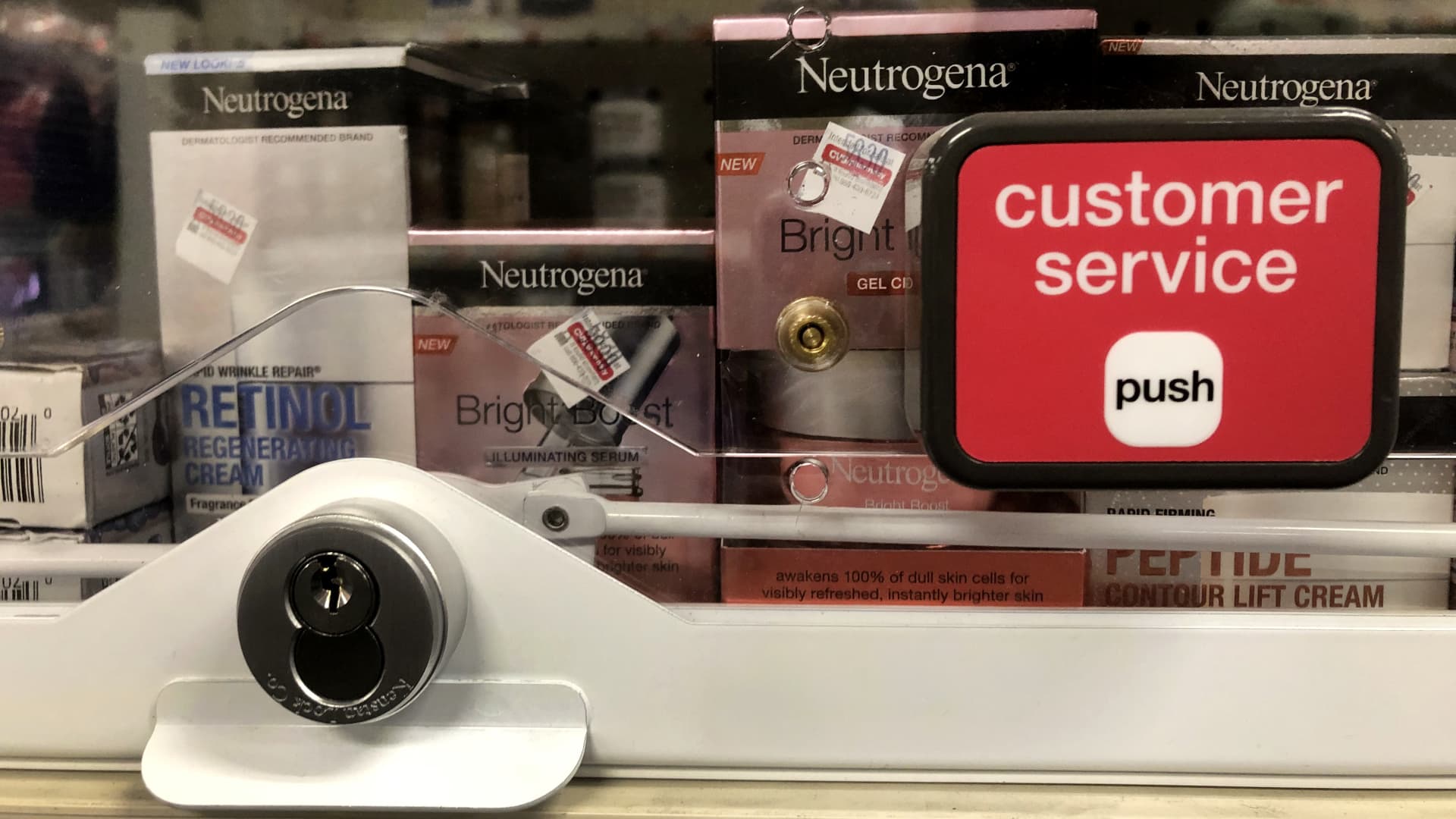This is the first installment of a three-part series exploring organized retail crime. In this series, we will delve into the impact of theft on retailers’ businesses and the measures being taken by companies and policymakers to address the issue. Make sure to read parts two and three later this week.Anti-theft measures, such as locked merchandise on shelves with customer service buttons, are becoming increasingly common in retail stores as companies prioritize combating organized retail theft. Many retailers have attributed lower profits to theft, but accurately quantifying the impact of stolen goods on their bottom line is challenging, and verifying their claims is even more difficult. A number of retailers, including Target, Dollar General, Foot Locker, and Ulta, cited retail theft as a factor in reduced profit outlooks or lower margins during the recent earnings season. As we enter a new round of financial reporting, it is likely that references to theft will be made once again.
Although retailers often describe organized theft as an industrywide problem beyond their control, it is nearly impossible to verify these claims. Companies are not obligated to disclose their losses from stolen goods, making it a challenging metric to accurately measure. As a result, the industry, investors, and policymakers must rely on retailers’ word when it comes to the impact of theft.
The growing prevalence of references to organized retail crime, combined with the lack of transparency surrounding the issue, raises concerns. Retailers and trade associations are increasingly leveraging their influence to shape legislation that benefits them and potentially disadvantages their competitors. This approach could disproportionately affect marginalized communities. Policy experts have critiqued this trend, highlighting the need for careful consideration in policymaking.
To understand the impact of theft on retailers, it is important to define “shrink,” a term commonly used in the industry to refer to lost inventory. Shrink can result from various factors, including shoplifting, vendor fraud, employee theft, administrative errors, and inventory damage. Retailers often attribute shrink to organized theft in recent quarters but rarely disclose the specific breakdown of inventory losses between crime and other causes. Furthermore, total losses from shrink and their changes over time are not typically disclosed. Companies tend to bury these losses within the “cost of goods sold” category and only reflect them in gross margin.
There is a reluctance among retailers to disclose shrink numbers due to the challenges of estimation and the potential negative perception it may create. As a result, it is unlikely that retailers will willingly disclose this information unless compelled to do so. However, some information on shrink can be found in documents submitted to the U.S. Securities and Exchange Commission, such as quarterly reports or annual filings.
Determining whether retail theft is on the rise is a complex task. Industry executives often cite a study from the National Retail Federation (NRF) released in September, which reported an increase in shrink losses from $90.8 billion in 2020 to $94.5 billion in 2021. According to the study, 37% of these losses in 2021 were attributed to external theft. However, there is no conclusive data on inventory losses in recent years, including the first half of 2022 when several companies highlighted it as a growing concern. The NRF study relies on anonymized data collected on an honor system basis, making it challenging to determine the true impact of shrink.
The NRF arrived at the $94.5 billion figure by applying the average shrink percentage of 1.4% to total retail sales reported to the U.S. Census Bureau in 2021. However, as retail sales increased by 17.1% from 2020 to 2021, it is logical that the total losses from shrink would also increase. Furthermore, the census data used in the study were preliminary and subject to change, resulting in estimated shrink losses being approximately $600 million lower than initially reported by the NRF.
Accurately quantifying theft in the retail industry is a complex task. Retailers rely on estimates, sales patterns, historical data, and other factors to determine how merchandise is lost. They use surveillance footage when available to infer instances of theft. While some retailers, like Target, disclose their losses from unaccounted inventory, accurately calculating theft and its impact remains challenging. Target, for example, acknowledged the difficulty in determining theft and highlighted the complexities of estimating the effect of stolen goods on profits.
Target emphasizes a significant increase in organized retail crime in its stores and online, attributing this trend to its growing losses from shrink. The company has seen a nearly 100% increase in the retail value of merchandise lost to shrink between 2019 and 2022. However, Target’s determination that retail theft is driving shrink is based on various signals, including criminal justice reforms, news reports of increasing crime rates, commentary from other retailers, and documented increases in violence and fraud. While these trends suggest a connection to organized retail crime, conclusively proving the link remains challenging.
Overall, accurately quantifying the impact of theft on retailers and determining whether it is on the rise is a complex task. The lack of transparency in reporting shrink losses and the challenges in verifying retail theft claims make it difficult to arrive at definitive conclusions. Despite these difficulties, it is crucial to address organized retail crime and develop effective measures to combat it.
Denial of responsibility! VigourTimes is an automatic aggregator of Global media. In each content, the hyperlink to the primary source is specified. All trademarks belong to their rightful owners, and all materials to their authors. For any complaint, please reach us at – [email protected]. We will take necessary action within 24 hours.


